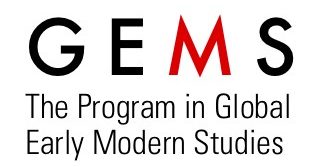The Verdant Earth I: Green Worlds of the Renaissance and the Baroque
Organizer: Leopoldine Prosperetti (Towson University)
Boston March 31 - April 2, 2016
The green mantle of the earth! An age-old metaphor in poetry the phrase
casts the greening of the earth as a marvel of divine artifice and calls
upon artificers to re-fashion the greenness of nature (natura vernans)
into art. It is also the title of chapter six in Rachel Carson's Silent
Spring (1962) who used it as a poetic figure for the terrestrial
vegetation that we take for granted. The topic of Verdant Earthis the
representation of vegetation in the art of the Old Masters. Its ambition
is to discover a visual poetics for the pictorial expression of greenery
in images that are traditionally called landscapes. By what rules of art,
we ask, are herbs, shrubs, trees and sylvan imagery in general envisioned
and represented? What role do vegetal motifs play in the imagined
woodlands of pastorals and landscapes of devotion, and how is
signification structured into their depiction?
We invite papers on the visual poetics of a verdant earth. How did artists
in Early Modern Europe compete with poets (and Nature!) in the fashioning
of natural imagery? How did they manage/manipulate the infinitude of
irregularities that is nature's way? What can be said of the many types of
landscape painting (pastoral, sylvan, rural, wilderness, or even river
views and forest clearings) in light of a poetics of vegetation? Artists,
we believe, followed a kind of lyrical naturalism, which turns the
phenomena of nature into the themes and motifs of visual poetry. It also
links the inexhaustible treasures of the natural world to the poets whose
epithets for green matter served as precepts that directed artists in the
discovery of just those traits - be it the obdurancy of an oak or the
pliancy of a willow- that turn vegetation into eloquent depiction. This
panel explores the representation of vegetation in word and image with the
goal to shape more nuanced approach to the poetics of greenery in images
that traditionally are called landscapes.
Please send a 150-word abstract and CV (max 300 words) to the organizer,
Leopoldine Prosperetti by May 31. Please put "RSA" in the subject line of your email.



